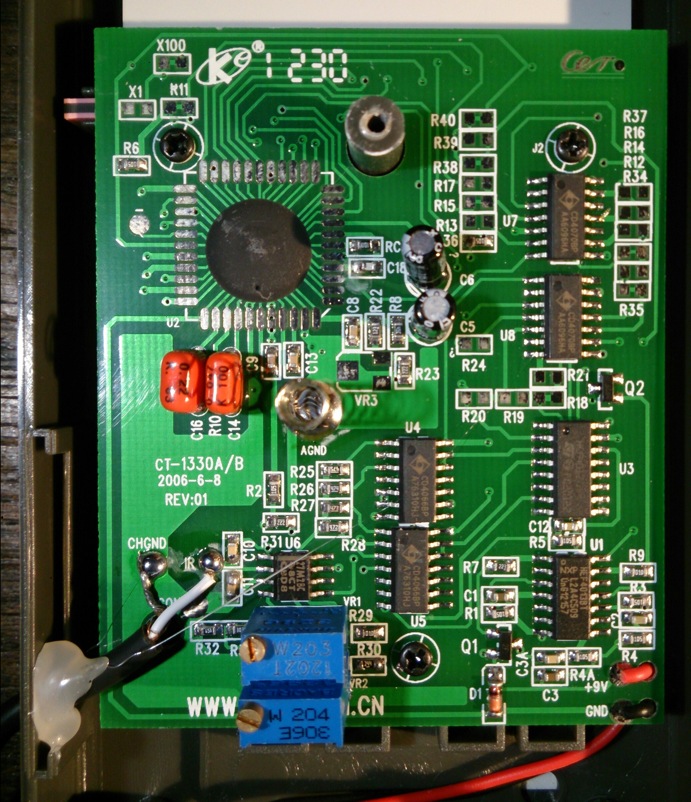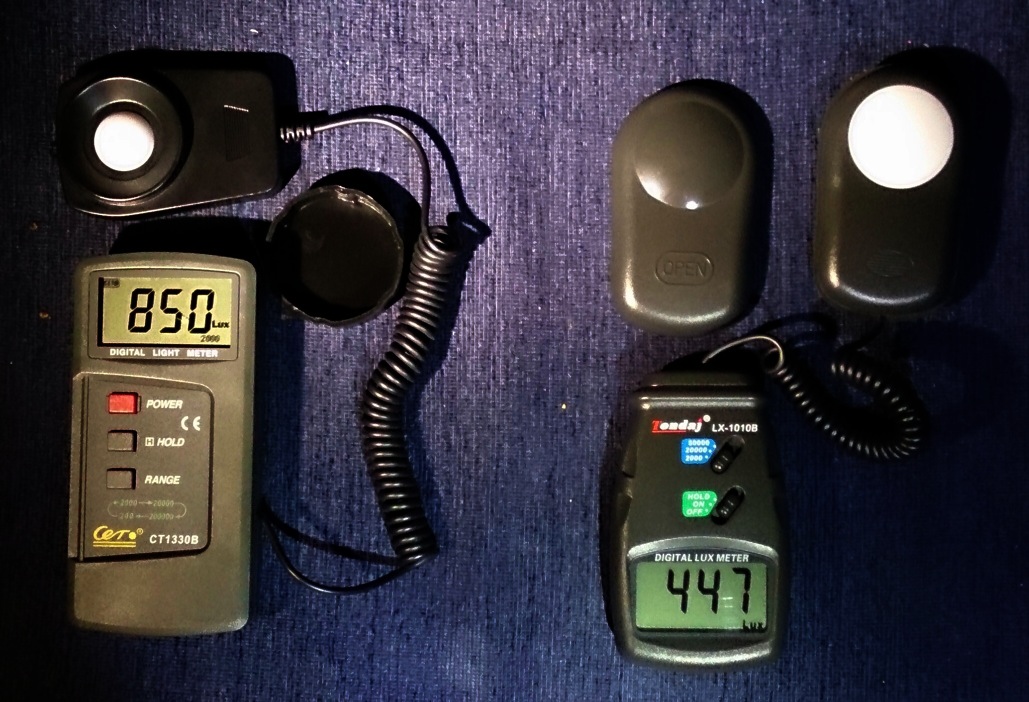
I have used the right meter for more than a year now, doing all my measurements with it. But I am (very slowly) building an integrating sphere now, and the trusty luxmeter does not have a handy sensor to clamp it in the sphere, so recently I bought the left one, a well known budget luxmeter, often used by flashlight enthousiasts, including match.
I felt rather uneasy about that my new Ceto meter read way lower (like 20%  ) than my old Tondaj, and because I had decided that I wanted to take the sensor+white dome out of the measuring part for building into the sphere (it takes up less of the sphere's inner surface like that, and it is no problem that the factory calibration is lost because the sphere will have its own calibration anyway), I opened it up to see what is happening inside. I took a look inside my old luxmeter's sensing part as well to compare. Let's look at the Tondaj's sensor first (in stereo :-) ) :
) than my old Tondaj, and because I had decided that I wanted to take the sensor+white dome out of the measuring part for building into the sphere (it takes up less of the sphere's inner surface like that, and it is no problem that the factory calibration is lost because the sphere will have its own calibration anyway), I opened it up to see what is happening inside. I took a look inside my old luxmeter's sensing part as well to compare. Let's look at the Tondaj's sensor first (in stereo :-) ) :
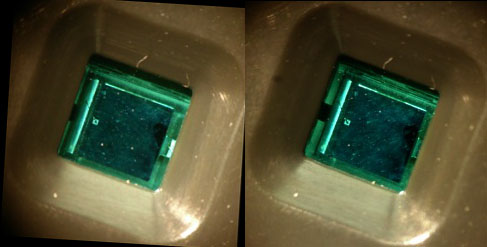
You can see the black sensor behind a rather dirty colour filter (that is there to adjust the sensor's sensitivity to the official lux wavelength response, and being a cheap meter, it will probably not do a tremendous job in that). I can not clean the filter because that would affect the calibration of the meter. So also no further breakdown: I want to keep using the meter with the current calibration.
So now on to the Ceto  :
:
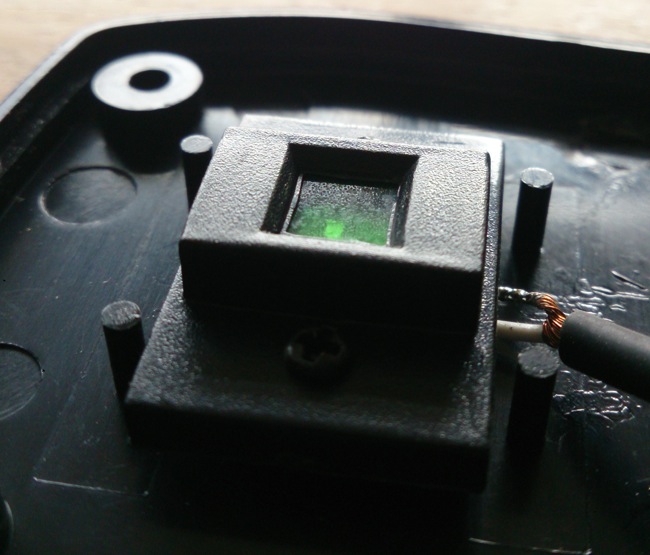
First observation: the colour filter has a different green colour than the Tondaj filter (looks like a 'more simple' filter' for some reason). I hope that is because the meter uses a different sensor with a different wavelength response, so that it needs a different colour filter (yeah, right  , but not entirely impossible, the actual sensor is not the exact same one, the wire is entering the measuring surface at a different position)
, but not entirely impossible, the actual sensor is not the exact same one, the wire is entering the measuring surface at a different position)
Second observation: the colour filter has a textured surface, perhaps it is there for some further diffusion of the light going on to reduce the angle-sensitivity of the sensor? Let's have a closer look:
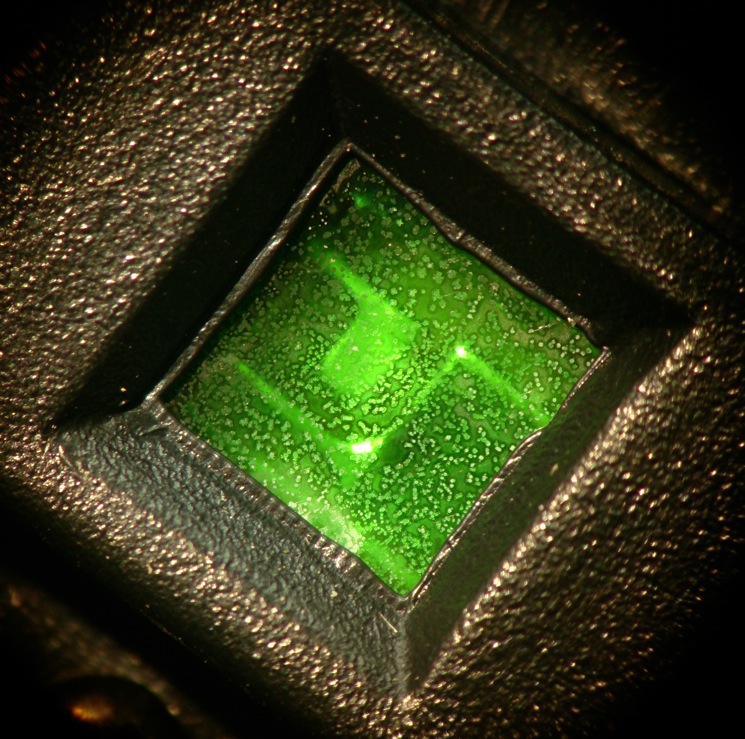
I know what that is! It is salt cristals! Hmm  , salt deposition as a diffuser? not entirely impossible, rather sophisticated actually, but no, it might actually help but it is much too irregular to be there on purpose, so I wiped it clean with a wettened soft tissue (bye bye calibration, but that was not needed for the purpose of this meter anyway). Weird looking sensor by the way, quite different from the Tondaj one....
, salt deposition as a diffuser? not entirely impossible, rather sophisticated actually, but no, it might actually help but it is much too irregular to be there on purpose, so I wiped it clean with a wettened soft tissue (bye bye calibration, but that was not needed for the purpose of this meter anyway). Weird looking sensor by the way, quite different from the Tondaj one....
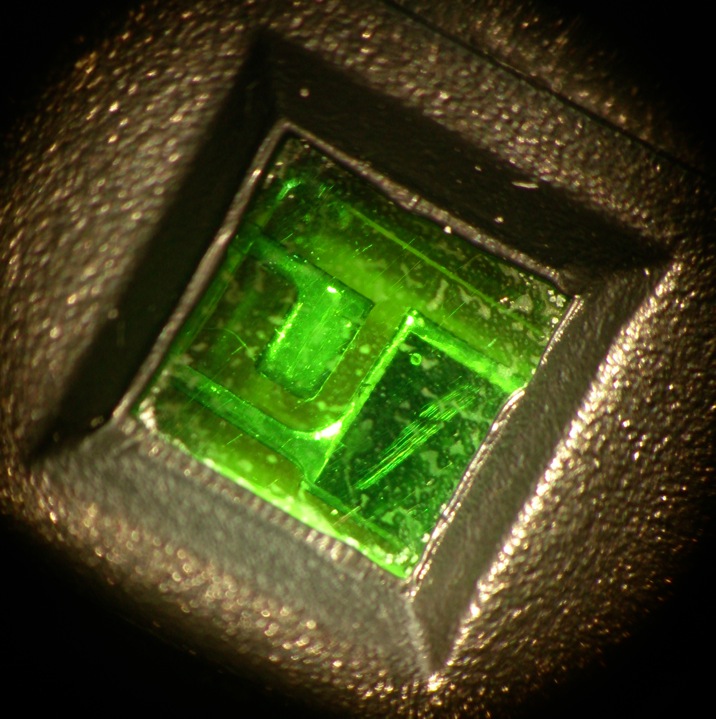
....no, wait a minute, that is not the sensor, looks like the leads, with the sensor completely to the side! that could explain a few things.
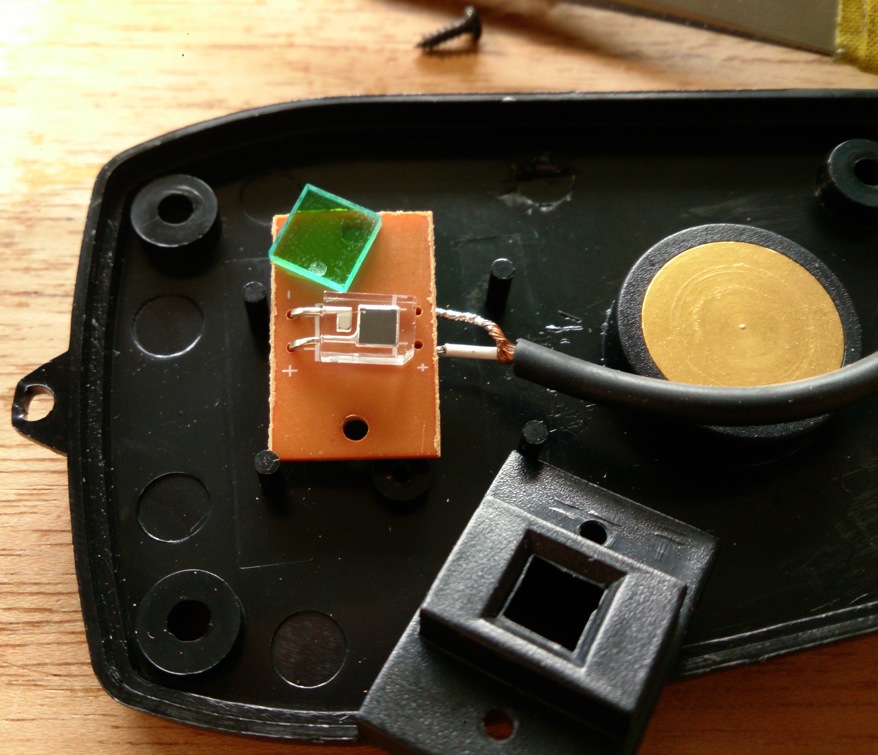
Oh yes, the sensor is way off the middle. I took the solder iron out and soldered the leads a bit deeper and re-bended them:


That is much better. I closed the meter and checked the reading: now it is 30% higher than the Tondaj meter.
So here is what I think has happened: the sensor part was more mis-manufactured than others, the person who does the calibration (I still like to think these meters are actually manually calibrated at some point  ) tries to get the adjustment right but even with the maximum possible adjustment the reading is still too low. Then, the person just leaves it like that and the meter is sold to poor me :-(
) tries to get the adjustment right but even with the maximum possible adjustment the reading is still too low. Then, the person just leaves it like that and the meter is sold to poor me :-(
